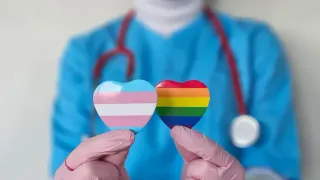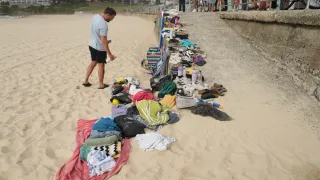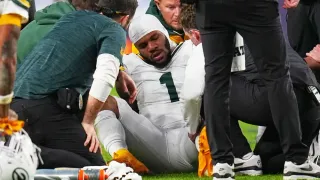October 11, 2014
Los Angeles LGBT Center :: Better Lives for Foster Youth
Kilian Melloy READ TIME: 5 MIN.
The Los Angeles LGBT Center has long pioneered issues important to the LGBT community, frequently aiming its ever-growing toolkit specifically at the special challenges faced by lesbian, gay, bi, transgender and queer youth.
One of The Center's latest trailblazing excursions into addressing the needs of young LGBTs is a landmark new study of LGBT youth in foster care. Commissioned and funded by The Center, the study was conducted by the prestigious Williams Institute at UCLA School of Law.
"This is the first study aimed at providing an accurate count of lesbian, gay, bisexual and transgender youth in the foster care system," Bianca Wilson Ph.D., the study's author and Williams Institute senior scholar of public policy, told The Rage Monthly. "Service providers and others have suspected that LGBT youth are overrepresented in foster care, but this is the first effort to answer this question through a population-based survey."
Suspicion that LGBT youth disproportionately populate the foster care system, was to be well founded. When the results of the study, funded by the RISE Project (Recognize, Intervene, Support and Empower) at The Center's Department of Children, Youth and Family Services, came in, the numbers were astonishing.
Aptly titled the Los Angeles Foster Youth Survey (LAFYS), the study revealed that nearly 20 percent of youth in foster care in Los Angeles County identify as LGBT. That's double the number of youth among the general population who so identify.
"Those numbers were staggering when I heard them," said Giovanni Fernandez, 38 of Los Angeles. "But that's just the number of youth who felt comfortable identifying as LGBT. The real number is probably even higher."
Fernandez is currently pursuing degrees in social work and hopes to one day improve the lives of LGBT youth in foster care. It's an issue close to his heart because he was a child in foster care in Los Angeles County from age three. In many ways, his troubled experience in foster care is emblematic of the circumstances some youth in foster care face even today.
"I was 15 when my second foster family figured out I was gay," Fernandez told The Rage Monthly. "At first [my foster mother] took me to psychologists and counselors to try to get me to change. She was a very religious and conservative Catholic. When it became clear I wasn't going to change, I was locked in my room - a lot. I was subjected to emotional, spiritual and psychological abuse. I couldn't come out of my room on holidays because she didn't want me to get any 'gay germs' on the guests and their kids. It was like I was a prisoner."
Funded as part of a five-year, $100 million federal grant intended to promote stability and permanent placement of youth in foster care, The Center's and Williams Institute's LAFYS study also revealed barriers to the goal of increasing permanency in the lives of LGBT foster youth.
"We found that LGBTQ youth were not only over represented in the foster care system in Los Angeles, but also experienced some disparities that are known to reduce chances of being placed in permanent homes," Dr. Wilson said. "For example, LGBTQ youth are more than twice as likely to live in a group home and have a higher average number of home placements."
While The Center did not receive all of the federal Permanency Innovations Initiative (PII) grant, it did get more than 13 percent of the money. Center officials are confident they have thus far made good use of those funds.
"We are at the end of year four, of the five-year project," said Curtis Shepard, Ph.D., director of Children, Youth and Family Services at The Center. "[Our] PII grant was and is $13.3 million. In addition to the survey, RISE is comprised of a two-pronged intervention [including] a care coordination team that works directly with LGBTQ children and youth as well as their parents and caregivers to increase family acceptance and decrease family rejection, with the goal of reducing the young person's length of stay in foster care and establishing a permanent home for her or him."
The second part of The Center's two-pronged RISE intervention program is training and coaching of social workers within the county's Department of Children and Family Services. The Center's RISE initiative also works with private-sector foster care provider agencies to improve "...LGBTQ cultural competency and best practices for conducting social work with LGBTQ children and youth,"according to Dr. Shepard.
Focusing specifically on LGBT youth makes LAFYS the first study of its kind in the nation. Both Dr. Wilson of the Williams Institute and Dr. Shepard of the Los Angeles LGBT Center have high hopes for the study's practical impact on the challenges faced by foster youth - and for its potential legacy. But their hopes are not intemperate.
"Ideally, this study would become longitudinal so that trends could be tracked over time, but this may not be practical from a resource standpoint," Dr. Shepard said. "We anticipate that the study will be replicated in other jurisdictions around the country."
According to Bianca Wilson, one of the most important takeaways from the survey is that there is currently a dearth of information about LGBT youth in foster care. "As much as the study gave us some answers to important questions, it also highlighted the need for more research," she said. "The more we can understand why this over-representation and these disparities exist, the better informed child welfare workers and administrators will be about how to address their unique needs."
Dr. Shepard couldn't agree more that further research should be done. But, he says, with LAFYS, there is already enough for the system to begin adapting to improve the lives of LGBT youth in foster care. "The findings from this study provide impetus for the county to take action steps to address the disproportionality and disparities confronted by LGBTQ youth in the system through the establishment of programs and services targeted to this subpopulation," he said.
While the latest research and any action it may inspire comes too late to make a difference in Giovanni Fernandez's foster care experience, his life as an adult and former foster child is a process of self-guided growth, education and therapy. He has been in a successful relationship with his partner for 10 years. And until he enters the field of social work as a practitioner helping them directly, Fernandez has some words of advice and encouragement for young LGBTQs in foster care today.
"We live in better times now," he says. "But, if you are lesbian, gay, bisexual or transgender and are in foster care, just know you are not alone. Hopefully, you are in one of the growing numbers of loving, accepting families; and you have an understanding social worker. But, even if you do or if you don't, please go onto the Internet and find an organization like the Los Angeles LGBT Center, which has a whole team of professionals and supportive people there to guide you to the resources you deserve."
Read the entire LAFYS report at lalgbtcenter.org/fosterchange. For more information about the Los Angeles LGBT Center and the many programs offered there, call 323.993.7400 or go to lalgbtcenter.org
 Copyright Rage Monthly. For more articles from Rage visit
Copyright Rage Monthly. For more articles from Rage visit 





